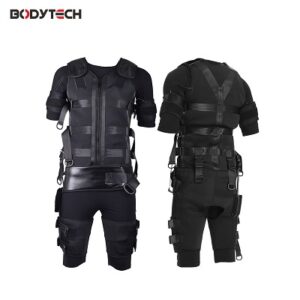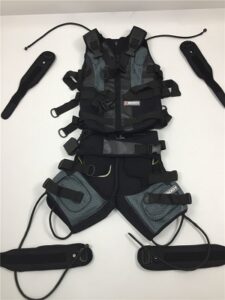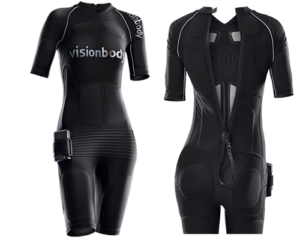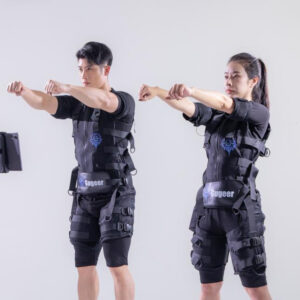Introduction
In the ever-evolving world of fitness, Electrical Muscle Stimulation (EMS) stands out as a revolutionary technique to optimize workout efficiency and elevate muscle engagement. This comprehensive guide provides tips necessary to seamlessly integrate EMS training into your conventional workout routine, unlocking unparalleled fitness benefits.
Understanding the Basics of EMS
Before diving into integration strategies, let’s delve deeper into the fundamentals of EMS. This innovative technology employs electrical impulses to stimulate muscle contractions, thereby intensifying and augmenting the impact of your exercises.
EMS operates by delivering controlled electrical pulses through electrodes placed on the skin’s surface. These pulses mimic the signals that the central nervous system sends to muscles during voluntary movements.
The electrical impulses from EMS penetrate deep into the muscle tissue, engaging both superficial and deep muscle fibers. This comprehensive activation contributes to a more thorough and effective workout, targeting a broader range of muscle groups than conventional exercises alone.
One of the key advantages of EMS is its adaptability. It is necessary to note, it can be incorporated into various workout routines, from strength training to endurance exercises. Indeed, the ability to customize the intensity and target specific muscle groups makes it a versatile tool for individuals with diverse fitness goals.
1. Assessing Your Fitness Goals
Embark on your integration journey by precisely identifying your fitness objectives. Whether your focus is on muscle building, fat loss, or overall endurance improvement, a clear understanding of your goals will tailor the application of EMS training to align seamlessly with your unique needs.
For instance:
Muscle Building: If your goal is muscle building, consider specific muscle groups you want to target. EMS can be customized to focus on specific areas for more defined results. All you have to do is customize your EMS training suit to focus on areas that contribute to your overall muscle-building goals. For instance, the Visionbody EMS training suit comes with a control app that manages EMS pulse ranges allowing for customization and the ability to target specific muscles for muscle building.

Fat Loss: For fat loss, combine EMS with cardiovascular exercises to maximize calorie burn during and after your workouts. You should embrace diverse cardio routines for a comprehensive fat-loss approach.
Endurance Improvement: For endurance improvement, incorporate EMS into longer duration workouts to enhance endurance gradually over time. Explore varying workout intensities to progressively build stamina.
2. Optimal Frequency of EMS Sessions
Research suggests that incorporating two EMS sessions per week is optimal for most individuals. Striking a delicate balance between maximizing results and allowing sufficient recovery is crucial in preventing overtraining. With the Visionbody EMS suit, you only need to train for 20 minutes per session.
Beginners may benefit from starting with one session per week and gradually increasing frequency. Advanced users, on the other hand, might experiment with three to five sessions for more intense training. However, it is crucial to monitor the body’s response while experimenting.
Moreover, it is important to implement post-EMS recovery protocols like stretching, foam rolling, and hydration to enhance the recovery process. Implement different recovery techniques to discover what works best for you.
3. Synergistic Exercise Pairings
Enhance the effectiveness of EMS training by strategically pairing it with conventional workouts. Squats, lunges, and push-ups, when combined with EMS, amplify muscle activation, engaging additional muscle groups for a holistic workout experience.
Integrate compound movements like deadlifts and bench presses to recruit a broader range of muscle fibers during EMS sessions. Experiment with the EMS technology variations and target different muscle groups.
Moreover, incorporate isolation exercises for targeted muscle engagement. Tailor isolation workouts to sculpt specific areas of your body, complementing the holistic effects of EMS.

4. Tailoring Intensity for Targeted Results
Customize EMS intensity based on your specific fitness goals. Higher intensity settings are ideal for muscle hypertrophy, while lower intensity with extended durations proves effective for fat burning. Fine-tune EMS parameters to achieve optimal results aligned with your objectives. Most EMS training suits come with an app that allows you to customize the intensity based on your fitness goals.
Gradually increase intensity over time to implement progressive overload, stimulating continuous muscle growth. Experiment with different overload strategies to keep your workouts challenging.
Consider incorporating heart rate monitoring to ensure your EMS sessions align with your targeted training zone for optimal cardiovascular benefits.
5. Integrating EMS with High-Intensity Interval Training (HIIT)
Combining EMS training with HIIT can elevate your conventional workout routine. The time-efficient nature of both techniques complements each other, creating a potent combination for improved cardiorespiratory fitness and metabolic benefits.
Experiment with various HIIT formats, such as Tabata or pyramid intervals, to keep your workouts dynamic and challenging. Adjust intensity and recovery periods based on your fitness level.
Gradually adjust the length of your HIIT intervals based on your fitness level. Progress to more intense intervals over time for increased effectiveness and cardiovascular benefits.
6. Ensuring Recovery and Avoiding Overtraining
While EMS training enhances conventional workout efficiency, prioritizing recovery is crucial. Allow adequate rest between EMS sessions, listen to your body, and incorporate active recovery techniques to prevent overtraining. It is crucial to keep the following points in mind for effective recovery.
Sleep: Prioritize quality sleep to enhance overall recovery and muscle repair.
Nutritional Support: Ensure a well-balanced diet with sufficient protein intake to support muscle recovery and growth.
Hydration: Maintain optimal hydration levels, as EMS may increase water loss during workouts.
7. Personalizing Your Approach
The beauty of EMS integration lies in its adaptability. Experiment with different frequencies, exercise pairings, and intensity levels to discover the optimal combination that resonates with your body and preferences.
Pay attention to how your body responds to EMS, adjusting the parameters based on comfort and feedback. Experiment with different settings to find the sweet spot for your comfort and effectiveness.
Consider consulting with a fitness professional or EMS specialist to tailor your approach to your specific needs and limitations. Professional guidance can provide valuable insights and enhance the effectiveness of your EMS integration.

Conclusion
As you embark on the journey of integrating EMS training into your conventional workout routine, keep in mind that personalization is key. This guide provides a foundation, but your unique body and goals will ultimately shape the perfect synergy between EMS training and your existing workouts.
In conclusion, by embracing EMS training as a complementary tool, you open the door to a new realm of fitness possibilities. Maximize your potential, achieve unprecedented results, and elevate your fitness journey with the seamless integration of EMS training into your conventional workout routine.











